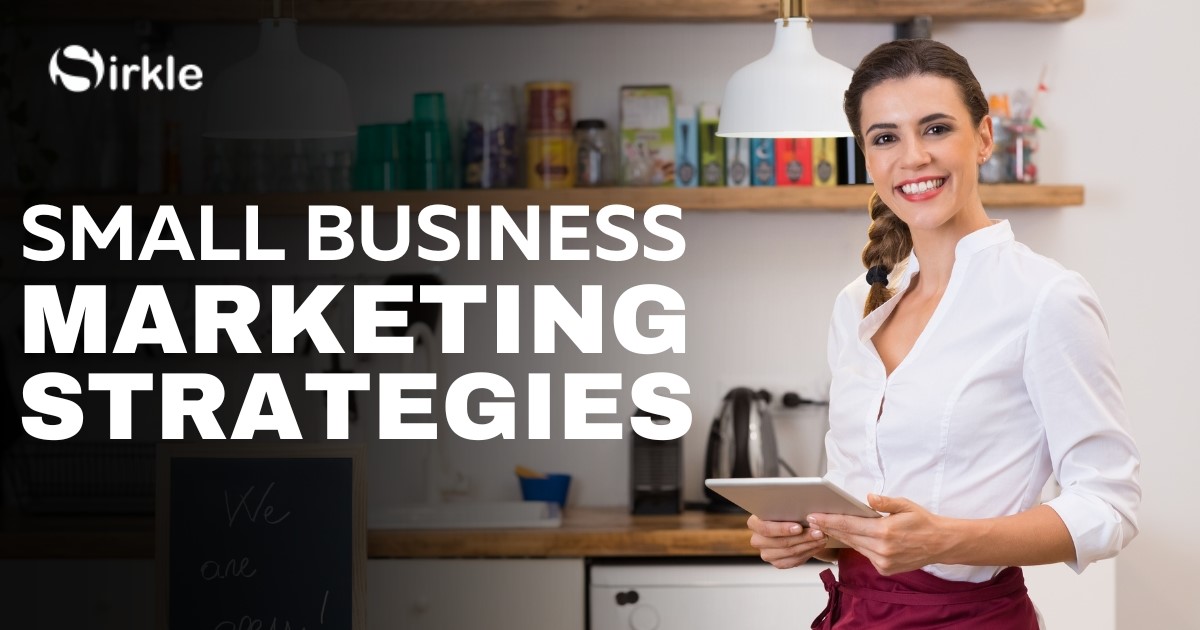Small Business Marketing Strategies

Small businesses' success is heavily influenced by their marketing plans. In order for a business to remain viable and operational, marketing is necessary to attract customers. In order to meet a business's sales goals and build its brand, marketing strategies are used. Marketers use various tactics to attract the right customers.
Writing a marketing plan for a small business requires consideration of what makes sense for that business. How are things going in the market? What is the best place to start?
You can set your small business up for success with these 8 marketing strategies.
1. Make your brand stand out
Small businesses need a clear brand identity to communicate what they are, what they do, and what they stand for to their customers. In order to convey their brand to customers, they need to match their company's identity with a suitable name, logo, colors, and imagery.
Businesses may decide to hire a freelancer or collaborate with an established agency to establish a brand look. Although this process can be expensive, it is worth it in the end. Imagine McDonald's or Starbucks and how their brands, logos, and colors are associated with their recognition.
When a company has its logo, it should use it on everything: advertising, business cards, its website, envelopes, and email signatures.
2. Get to know your customers
Marketing strategies are not one-size-fits-all. Marketing plans should be tailored to the specific needs and goals of each company, as each caters to a different niche in the market.
A small business owner must first understand who their customers are before they can decide what tactics and strategies to use
By asking these questions, they can identify their target customer:
- Can you tell me what their demographics are?
- Can you tell me how old they are?
- Can you tell me where they live?
- Can you tell me what online services they use?
- What products do they look for?
In order to develop a highly targeted and effective marketing strategy, businesses need to know these things about their target customers.
3. Build a website
Today's business cards are websites. Potential customers see it the first time they see a company's name on Google, and it is the first opportunity a company has to make an impression. Marketing plans begin with a website. By providing helpful content on their website, companies can provide more information to their customers, grab free traffic from search engines, drive traffic to their social media, and establish themselves as marketing authorities.
You can easily create a website if your company does not already have one.
A domain name can be purchased by choosing the name you want, checking its availability, and paying a monthly or annual fee.
Host a company's website: This involves another company hosting a company's website on its servers and serving it to customers. Domain names are often purchased from the same company as domain names.
Content management systems (CMS) enable you to create and update your website over time. In addition to free templates, companies can pay $50–$100 for premium themes if they want something more unique or customized.
4. SEO: Make the most of it
A website's traffic is predominantly directed through Google searches. For a company to rank high on Google, it is crucial to keep its page keywords optimized as Google algorithms change.
The chances of a site getting clicked on greatly increase if it appears on the first page of Google search results, so companies should do everything in their power to make sure that's where they appear.
5. Obtain a Google listing
Having a local customer base makes Google My Business a useful tool for local businesses. Companies will appear in the top searches when people in the same area search on Google for a product or service the company provides.
People will be more inclined to trust a business when they see its profile and find good reviews or find it at the top of their list.
6. Use Facebook to advertise
Using Facebook Ads is an excellent way to target specific groups. Using demographic data, such as age, sex, location, interests, online habits, and more, businesses can target their advertising.
It is relatively easy and inexpensive to advertise on Facebook. With it, businesses are able to reach as many potential customers as possible in a short period of time.
7. Customers and potential customers should be emailed
Using email as a marketing strategy has many advantages. Many potential customers can be reached using this approach because it is easy to do, can be automated, provides instantaneous communication, is inexpensive, and can be done quickly.
In order to ensure the emails get opened and are not simply diverted to spam, it is imperative that a business provides interesting, valuable, and relevant content to its list.
8. Make use of Google AdWords
The key is for people to find you on Google, and you can greatly increase your chances of people seeing your name by using Google AdWords.
Despite being more expensive than other marketing tactics, Google AdWords is still a powerful marketing tool that should be considered. Using Google AdWords, businesses can greatly increase their chances of being found when people search on Google.
Got questions? Visit us @ www.sirkle.com and we’re happy to help.


